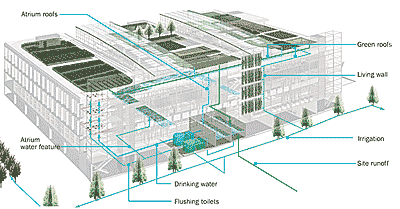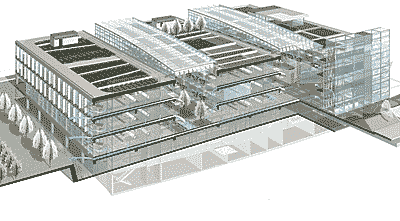An Evolving Edifice That Will Improve With Time
Spreading the gospel
The deal is also advantageous for the utility, says Bruce Sampson, BC Hydro's vice president for sustainability, who predicts that rents will rise considerably over the next quarter century. But the utility's interest in CIRS goes beyond the inexpensive rent. It shares the center's mission of community engagement and has had a long-standing program to encourage its customers to conserve electricity.
About 50 employees will occupy BC Hydro's space at the center at any one time, but on a revolving basis, predicts Sampson. "They will be exposed to the leading-edge thinking and then will bring it back to their regional offices," he says.
Part of BC Hydro's approximately $4.5 million prepayment will go toward sponsorship of a 100-seat visualization theater, where the general public, policy makers, and others will be able to quickly model the environmental ramifications of energy-use decisions at the regional, city, and building scale. "To hit our goals we have to be a catalyst for sustainable urban environments, infrastructure, and buildings," says Sampson.
The CIRS building will be composed of two three-story office blocks connected by a central atrium that features internal light scoops and solar reflectors. The space will be covered by a saw-tooth-shaped skylight with integrated photovoltaic panels. The 36.9 megawatt-hour-per-year array is expected to supply about 20 percent of the facility's electricity needs. Power will also be provided by solar hot-water collectors, fuel cells, and an on-site cogeneration plant. "We are trying to pull the building off the grid," says Blair McCarry, a principal at Stantec, the project's mechanical engineer.
The south side of the building will serve as a "three-dimensional vertical lab" for the testing of such elements as glazing, photovoltaic panels, wall assemblies, and shading devices. On almost every floor, at the southwest and southeast corners of the building, labs for building monitoring and assessment will be located in the 13-foot-deep zone directly adjacent to the facade. These rooms will provide a controlled environment for the study of the relationship between the building envelope components and other elements, such as the heating and cooling systems, interior shading devices, or interior finishes and furnishings.











